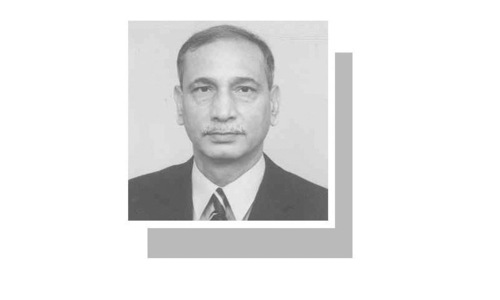 KARACHI, Nov 18: Legend has it that seven revered Islamic saints whose shrines are located across Karachi have for centuries protected the city from natural calamities.
KARACHI, Nov 18: Legend has it that seven revered Islamic saints whose shrines are located across Karachi have for centuries protected the city from natural calamities.
But after another deadly earthquake killed up to 300 people in Balochistan last month, there are fears that the presence of the saints may not be enough to protect the 14 million people from death and destruction as the city is ill-equipped to cope if disaster strikes.
Deep beneath the bustling port city, the Indian, Arabian and Eurasian tectonic plates are in constant friction, with the potential to wreak havoc above. As a result, seismologists say Karachi is as much at risk from earthquakes as Los Angeles.
But unlike the sprawling coastal city of Los Angeles or other cities lying on or near fault-lines, Karachi is ill-equipped to cope if disaster strikes, according to experts.
“The earthquakes in other parts of the country are warnings for us and we should take them seriously,” Noman Ahmed, an architect associated with the NED University of Engineering and Technology, told AFP.
“We are not realising the danger we are surrounded by.”
Once known for its suburban green spaces and tree-lined streets, Karachi is now a concrete jungle of haphazard settlements, sprawling upwards and outwards as far as the eye can see. More than half the population live in slums.
Mr Ahmed estimates that virtually all of the city’s 500,000 buildings are structurally unsound. “Not more than five per cent of our buildings are constructed by following the building rules. The rest are self-built by builders without taking any professional advice,” he added.
“You can see negligible provisions for evacuation or accessibility in our buildings. There are no fire or hazard escapes in the majority of structures.”Civic leaders, including Naib Nazim Nasreen Jalil, also admit that most of the city’s buildings are not built to bear strong quake shocks and the public is unaware of the need to take precautions.
Although that follows a trend in the country as a whole, Mr Ahmed says he also fears for the safety of other structures. “Our bridges have no accessibility provisions. Most bridges have either completed their designated age or are bearing excessive load. They are dangerous because there is no building monitoring here,” he adds.
“We have underground water and electricity conduits and gas lines, which can expose extra dangers in the wake of a major disaster,” he observes.
For Roland De Souza, a member of the Shehri (Citizen) organisation that monitors civic violations in Karachi, most of our disasters and emergencies in Pakistan are man-made, not natural. “Earthquakes do not kill, falling buildings do,” he says.
Meagre resources
Civic leaders also complain of inadequate resources that could hamper any relief effort if the worst happens. The city government has an annual budget of Rs47 billion from which funds must be found for effective disaster management.
“We have very limited staff and resources, which is enough for routine disasters but not for large-scale calamities,” says Masood Alam, chief of the municipal services department.
The department controls the city’s poorly-staffed and resource-strained fire brigade, which struggles to cope at the best of times.
With a population growing at a staggering 3.75 per cent each year, it will be stretched further in years to come. “Our firemen are brave but they are few in number,” says Mr Alam.
“We have just 50 fire tenders and 20 fire stations. We need much more professional staff, at least 365 fire tenders and 178 fire stations in Karachi.”
In comparison, Karachi's sister city, Mumbai, in western India, has a similarly-sized population but more fire stations, resources and a bigger budget to cover a smaller area, he observes.
Fahim Zaman Khan, a former city mayor, also points to a lack of joined-up administration. “Not more than 40 per cent of the city is under mayoral governance. The rest is controlled by 30-odd agencies that do not collaborate with the city government,” he says.
“We seriously lack a disaster managing set-up that could pool the resources of all the agencies and use it under a single disaster management commissioner.”The fire brigade needs trained and skilled staff, but Pakistan lacks a single training facility for fire fighters, he says, calling for greater investment in an effective emergency response system.
Meanwhile, doctors say that already-inadequate healthcare facilities will be overwhelmed if a disaster strikes. There are only 10,000 hospital beds and one doctor for every 1,500 people on average.
A massive earthquake in northern parts of the country in 2005 killed 73,000 and displaced 3.5 million others. Some 20,000 people were killed when a quake struck the western Indian state of Gujarat, just across the border in 2001.
According to Dr Shershah Syed, “We are totally unprepared to cope with major disasters. Our hospitals have negligible facilities that can deliver treatment, provided survivors get to them because all hospitals are located in congested places.”















































Dear visitor, the comments section is undergoing an overhaul and will return soon.